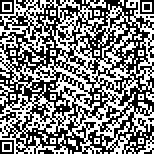寿依群,蒋红,陈文君,刘骁杰,吴肖清.电针联合神经肌腱滑行训练治疗轻中度腕管综合征的疗效观察[J].中华物理医学与康复杂志,2017,39(1):38-42
扫码阅读全文

|
| 电针联合神经肌腱滑行训练治疗轻中度腕管综合征的疗效观察 |
|
| |
| DOI: |
| 中文关键词: 电针 神经肌腱滑行训练 腕管综合征 电生理指标 |
| 英文关键词: Electroacupuncture Nerve-tendon gliding exercises Carpal tunnel syndrome Electrophysiology |
| 基金项目:浙江省中医药管理局科研基金项目(2014ZA071) |
|
| 摘要点击次数: 2382 |
| 全文下载次数: 3637 |
| 中文摘要: |
| 目的观察电针联合神经肌腱滑行训练治疗轻中度腕管综合征(CTS)的临床疗效。 方法采用随机数字表法将40例轻中度CTS患者分为观察组及对照组。2组患者均常规口服神经营养药物,观察组患者在上述基础上辅以电针及神经肌腱滑行训练,对照组则辅以CTS健康教育宣教。于治疗前、治疗4周后分别采用视觉模拟评分(VAS)、波士顿腕管量表(BCTQ)评定2组患者临床疗效,同时对比分析其电生理指标变化情况,包括拇指-腕及中指-腕感觉传导速度(SCV)、拇指-腕和中指-腕感觉神经动作电位波幅(SNAP)、正中神经远端潜伏期(DML)及拇短展肌复合动作电位波幅(CAMP)等。 结果治疗前2组患者各项电生理指标(包括拇指-腕和中指-腕SCV、SNAP、正中神经DML及拇短展肌CMAP)、疼痛VAS及BCTQ评分组间差异均无统计学意义(P>0.05);分别经4周治疗后发现观察组拇指-腕SCV[(45.77±6.24)m/s]、中指-腕SCV[(49.15±8.26)m/s]、拇指-腕SNAP[(13.48±4.21)μV]、中指-腕SNAP[(12.83±4.37)μV]、正中神经DML[(3.58±1.02)ms]、拇短展肌CMAP[(8.78±2.98)mV]、疼痛VAS评分[(2.80±1.01)分]均较治疗前及对照组明显改善(均P<0.05);观察组治疗后BCTQ症状评分[(1.99±0.81)分]、功能评分[(1.62±0.74)分]均较治疗前明显下降(P<0.05);对照组仅发现正中神经DML[(4.34±1.08)ms]、拇指-腕SCV[(40.24±6.76)m/s]及疼痛VAS评分[(3.67±1.11)分]较治疗前明显改善(P<0.05)。 结论电针联合神经肌腱滑行训练能显著改善轻中度CTS患者手功能及临床症状,该联合疗法值得临床推广、应用。 |
| 英文摘要: |
| Objective To observe the effect of electroacupuncture and nerve and tendon gliding exercises on mild to moderate carpal tunnel syndrome. MethodsForty patients with mild to moderate carpal tunnel syndrome were randomly divided into an observation group and a control group, each of 20. Both groups were given neurotrophic drugs. The observation group was additionally provided with electroacupuncture and nerve and tendon gliding exercises, while the control group was given routine health education for 4 weeks. The Boston carpal tunnel syndrome questionnaire (BCTQ), a visual analogue scale (VAS), thumb and middle finger to wrist motor conduction velocity (MCV), sensory nerve action potentials (SNAPs), median nerve distal motor latency (DML) and the amplitude of compound muscle action potential (CMAP) of the musculi abductor pollicis brevis were evaluated. ResultsThere were no significant differences in any of the measurements between the two groups before the treatment. After four weeks of treatment, significantly better improvement was observed in the average SCV of the thumb and wrist, the SCV of the digitus medius and wrist, the SNAP of the thumb and wrist, the SNAP of the digitus medius and wrist, the DML of the nervus medianus and the CMAP of the abductor pollicis brevis in the observation group compared to before the treatment and compared to the control group. Moreover, there was a significant decrease in the observation group′s average BCTQ symptom score and function score and in their VAS ratings. However, in the control group significant differences were only found in the average SCV of the thumb and wrist, the DML of the nervus medianus and in their VAS ratings. ConclusionsElectroacupuncture and nerve and tendon gliding exercises can significantly relieve symptoms and restore hand function. They are worth applying in clinical practice. |
|
查看全文
查看/发表评论 下载PDF阅读器 |
| 关闭 |
|
|
|